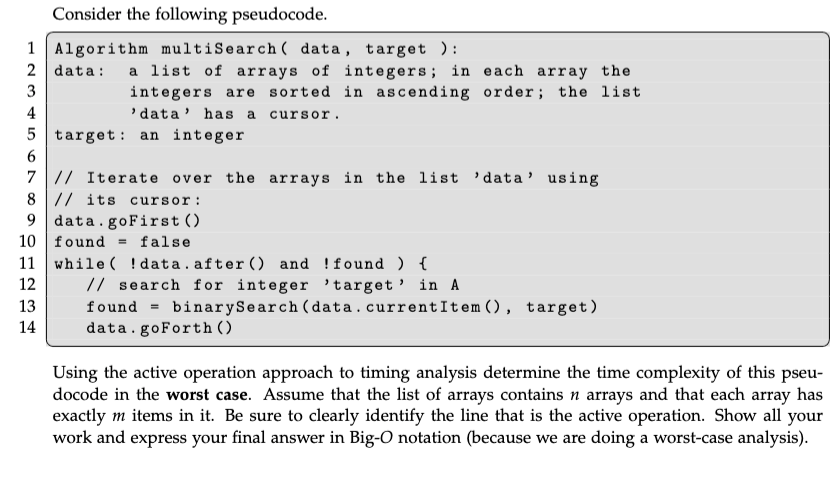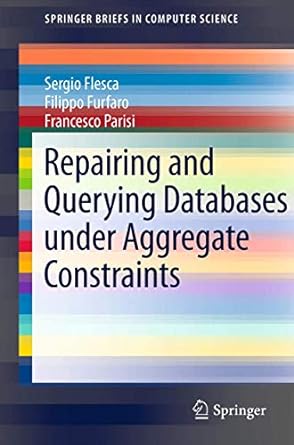Answered step by step
Verified Expert Solution
Question
1 Approved Answer
Consider the following pseudocode. Algorithm multisearch ( data, target ) : data: a list of arrays of integers; in each array the integers are sorted
Consider the following pseudocode.
Algorithm multisearch data, target :
data: a list of arrays of integers; in each array the
integers are sorted in ascending order; the list
'data' has a cursor.
target: an integer
Iterate over the arrays in the list 'data' using
its cursor:
data.gofirst
found false
while Idata.after and found
search for integer 'target' in A
found binarySearch data currentItem target
data. goForth
Using the active operation approach to timing analysis determine the time complexity of this pseu
docode in the worst case. Assume that the list of arrays contains arrays and that each array has
exactly items in it Be sure to clearly identify the line that is the active operation. Show all your
work and express your final answer in BigO notation because we are doing a worstcase analysis

Step by Step Solution
There are 3 Steps involved in it
Step: 1

Get Instant Access to Expert-Tailored Solutions
See step-by-step solutions with expert insights and AI powered tools for academic success
Step: 2

Step: 3

Ace Your Homework with AI
Get the answers you need in no time with our AI-driven, step-by-step assistance
Get Started


